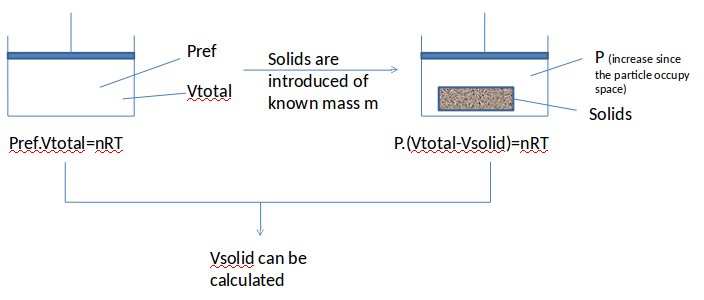
Skeletal Density
Question or remark ? Please contact us at admin@powderprocess.net
| Section summary |
|---|
| 1. Definition of
skeletal density |
| 2. Measurement of skeletal density |
| 3. Application of skeletal density |
1. Definition of skeletal density
The particle skeletal density is the density of the material that constitute the particle, without porosity.
For other density definitions, please refer to : bulk density or particle density
2. Measurement of skeletal density
The Solid Skeletal density is to be measured by gas pycnometry thanks to a gas pycnometer (liquid pycnometry is not accurate)
Note : the method presented below is simplified, the objective being to present a concept, not to give an accurate method of calculation.
The volume of solids (excluding the pores), can be calculated thanks to

Equation 1 : deduction of volume of solid from pycnometry experiment

Figure 1 : Measuring skeletal density
Top
5 Most Popular
1.
Pneumatic transport design guide
2. Ribbon blenders
3. Powder mixing
4. Hoppers design guide
5. Measuring degree of
mixing
--------
Top 5 New
1. Continuous Dry Mixing
2. Mixing speed
3. Mixer cycle time
optimization
4. Batch
/ continuous mixing comparison
5. Energy Savings
3. Application of skeletal density
The skeletal density can be used to calculate the apparent particle density. It is for this purpose necessary to calculate the porosity of the particle ωp in m3/kg from the experience described above.